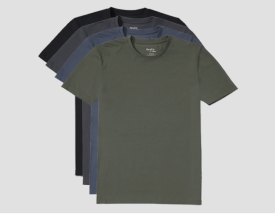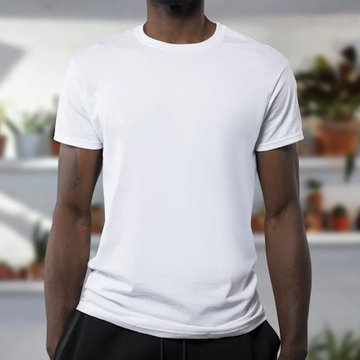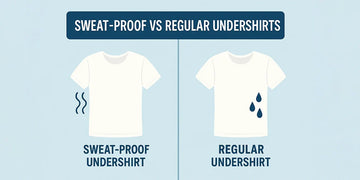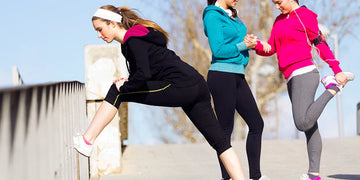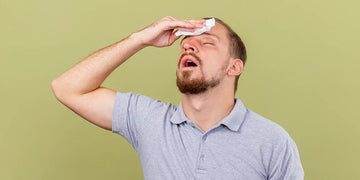Sweat, the sticky, clingy, awkward kind. Whether you're crushing a workout, hiking a trail, or just trying to survive your daily commute, what you wear can make or break your comfort.
Enter breathable and moisture-wicking fabrics. These are the real MVPs of staying dry and cool.
Now, let’s clear something up. These terms often get tossed around like they're twins, but they actually have very different jobs. One is all about airflow. The other is a sweat magician. So let's break it down: simple, smart, and totally wearable wisdom.
What Is Breathable Fabric
Breathable fabric are the air conditioner your skin deserves. It lets heat and moisture vapor escape instead of trapping it against your body. No more marinating in your own sweat.
Why It Works:
● Reduces overheating by letting body heat escape
● Avoids that gross, soggy shirt feeling
● Keeps skin happy and rash-free
● Helps you push harder during workouts by keeping muscles cooler
And it's not just for gym rats. Breathable fabrics are popping up everywhere from pajamas and officewear to uniforms and everyday basics.
What Is Moisture-Wicking Fabric
Imagine a shirt that sees your sweat and immediately says, "Not today." Moisture-wicking fabrics pull sweat off your skin and push it to the outer surface of the fabric, where it evaporates quickly.
It’s not magic, it’s capillary action. Hydrophilic fibers attract moisture. Hydrophobic layers repel it. The result? Dry skin and dry fabric.
The Benefits:
● Keeps your skin dry, no matter how hard you're working
● Reduces odor by keeping things dry and bacteria-unfriendly
● Prevents chafing because there's less moisture to rub you the wrong way
● Helps regulate body temperature through faster sweat evaporation
● Gives you the confidence to raise your arms without fear of pit stains
This isn't just for athletes anymore. Moisture-wicking fabrics are key for anyone constantly on their feet, in motion, or just trying to stay cool under pressure.
Breathable vs Moisture-Wicking: What's the Difference
Even though they often show up together, they handle different parts of the sweat equation.
Breathable fabric lets heat and vapor escape.
Moisture-wicking fabric moves liquid sweat away from your skin.
Here’s how they stack up:
|
Feature |
Breathable |
Moisture-Wicking |
|
What It Does |
Air and vapor escape |
Moves sweat away from skin |
|
Skin Feel |
Cool and airy |
Dry and light |
|
Dry Time |
Moderate |
Fast |
|
Best For |
Heat relief |
Sweat control |
|
Examples |
Mesh tops, linen |
Dry-Fit shirts, techwear |
|
Watch Out For |
Doesn’t handle sweat |
May feel synthetic |
Some fabrics handle both. Some don’t. Cotton, for example, breathes great but holds moisture like a sponge. Polyester wicks well but needs extra design elements to boost breathability.
How Performance Fabrics Are Engineered
These features don’t just happen. Designers and textile engineers build them in.
● Chemical finishes: Hydrophilic layers pull sweat in, hydrophobic layers push it out
● Fabric weaves: Advanced knits create airflow channels and encourage evaporation
● Microfibers: Tiny fibers mean more surface area to spread out and dry fast
● DWR coatings: Repel moisture without blocking breathability
● Layered membranes: Common in jackets, these let vapor out while keeping rain away
Even plasma treatments and smart textiles are getting in on the action. Fabrics are literally evolving.
Best and Worst Fabrics for Sweat Control
Top Performers:
● Polyester: Lightweight, fast-drying, strong
● Nylon: Smooth, stretchy, mildew-resistant
● Polypropylene: Doesn’t absorb water at all
● Spandex (Lycra): Adds flexibility and wicking support
● Merino wool: Naturally breathable and odor-resistant
● Bamboo viscose: Soft, breathable, sustainable
● Microfiber: Excellent at moisture management
Ones to Avoid:
● Cotton: Breathable, but hangs onto sweat
● Linen: Great airflow, terrible wicking
● Denim: Stiff, slow to dry, heavy
● Silk: Luxurious but soaks up sweat and stains
Where These Fabrics Perform Best
● Athletic wear: Breathable and wicking gear keeps you cool and dry during workouts
● Outdoor clothing: Essential for dealing with weather and activity
● Workwear: Great for physically demanding or hot environments
● Everyday clothing: T-shirts, underwear, travel pants with built-in sweat-fighting
● Medical gear: Scrubs, patient gowns, and dressings benefit from both technologies
● Sleepwear and bedding: Keeps you cool and sweat-free at night
How to Shop and Care for Performance Fabrics
Buying Tips:
● Look for blends with at least 70 percent polyester or nylon
● Merino wool is a natural wonder for sweat and odor
● Avoid 100 percent cotton if you're prone to sweating
● Seek out mesh zones or laser-cut ventilation
Fabric Care Tips:
● Wash after every 1 to 2 wears to prevent odor
● Use mild, non-softening detergent
● Wash inside out in cold water
● Avoid high heat in the dryer or line dry instead
● Never use fabric softener. It clogs the performance
What's Next for Sweat-Fighting Fabrics
The fabric of the future is here and it’s getting smarter.
● Nanotech coatings that repel water at a microscopic level
● Phase-change materials that adapt to your body temperature
● Hybrid blends combining synthetic performance with natural comfort
● Eco-friendly options like recycled polyester and biodegradable fibers
● Smart textiles that react to your sweat levels in real time
Soon your clothes will be just as smart as your phone. Maybe smarter.
Frequently Answered Questions
Can I wear moisture-wicking fabrics in cold weather, or are they only for hot climates?
Yes, moisture-wicking fabrics are great in cold weather too. Sweat doesn’t take a season off, and if it sits on your skin in cold conditions, it can actually make you colder. These fabrics help pull moisture away and keep your body temperature more stable.
Is it true that moisture-wicking clothes always smell worse over time?
They can get a little funky if not cared for properly. Synthetic fibers sometimes trap odor-causing bacteria more than natural fabrics. To avoid the stink, wash them regularly, skip the fabric softener, and let them air dry when you can. Merino wool blends are a great option if odor is a dealbreaker.
Are there any moisture-wicking or breathable options that also look stylish for work or going out?
Yes, plenty. Performance fashion is a real thing now. You’ll find moisture-wicking polos, chinos, and even blazers that look sharp but feel like activewear. Perfect for commuting, meetings, or anything that requires both comfort and polish.
Do breathable fabrics protect against sun exposure?
Some do, but not all. If you want UV protection, look for clothing with a UPF rating. Many outdoor and travel-specific brands build UV defense right into their breathable fabrics, especially in long-sleeve or lightweight options.
Can moisture-wicking fabrics actually help with skin conditions like eczema or heat rash?
They can definitely help. When your skin stays dry and cool, you're less likely to deal with irritation or flare-ups. Look for smooth fabrics with flat seams or seamless construction, especially if your skin is extra sensitive.
Do these fabrics lose their performance over time?
Eventually, yes. The good news is they last longer when you treat them right. Wash with gentle detergent, skip the softeners, and keep them away from high heat. Take care of the tech, and it’ll keep doing its job for the long haul.
Are eco-friendly versions of moisture-wicking or breathable fabrics as good as traditional ones?
Absolutely. Recycled polyesters, bamboo blends, and even biodegradable synthetics are stepping up. Many offer the same performance benefits as their non-sustainable counterparts, but with a lower impact on the planet. Just check for labels like Repreve, TENCEL, or eco-performance to spot the good stuff.
Wrap Up
Performance fabrics have leveled up from gym wear to everyday essentials. Breathable fabrics keep air moving and heat under control. Moisture-wicking fabrics handle the sweat so you don’t have to.
When you combine both, you get gear that works as hard as you do. Pick the right fabrics, treat them well, and you’ll stay dry, cool, and confident, whether you're sprinting through meetings or hiking up mountains.
Level up your wardrobe with performance fabrics that work as hard as you do.
